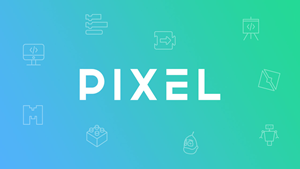The Digital Playground: Navigating Programming for Kids
September 7, 2024, 5:03 am
In today’s fast-paced world, programming is the new literacy. It’s not just for tech whizzes anymore; it’s for every child eager to explore. The digital landscape is a vast playground, and coding is the key to unlocking its treasures. For kids aged 12, the options are as diverse as a box of crayons. From game development to web design, the journey into programming can be both fun and educational.
Imagine a world where children can create their own games, design websites, or even build apps. This is not a distant dream; it’s a reality that many young learners are stepping into. The allure of technology captivates their imagination. Schools and online platforms are stepping up, offering courses tailored to young minds. But where should they start?
Let’s break down the most popular programming paths for kids.
**1. Visual Programming with Scratch**
Scratch is like a digital canvas. Developed by MIT, it allows kids to paint their ideas using colorful blocks. It’s simple yet powerful. Children can create animations, games, and stories without writing a single line of code. The beauty of Scratch lies in its accessibility. It’s free and available online, making it easy for anyone to dive in.
However, some may argue that Scratch is too simplistic for older kids. While it lays a solid foundation, it may not provide the depth needed for advanced programming. Still, it’s a great starting point. It introduces concepts like loops and conditionals in a playful manner.
**2. Python: The Versatile Language**
Python is the Swiss Army knife of programming languages. It’s versatile, easy to learn, and widely used in various fields. From web development to data analysis, Python opens doors. For kids, it’s like learning the English language of coding.
Many children find motivation in creating mods for games like Minecraft. This blend of gaming and coding keeps them engaged. As they tinker with Python, they develop problem-solving skills and logical thinking. It’s a win-win.
**3. Game Development with Lua and Roblox**
Roblox is more than just a game; it’s a platform for creativity. Using Lua, kids can design their own games and share them with friends. It’s like being a game developer in a virtual world. The thrill of seeing others play their creations is unmatched.
Learning Lua through Roblox is an excellent way to introduce programming concepts. Kids learn to think critically and collaborate with peers. Plus, there’s potential for monetization. If a game becomes popular, it can lead to real-world earnings.
**4. C# and Unity: The Future of Game Development**
For those serious about game development, C# and Unity are the golden tickets. Unity is a powerful game engine used by professionals. Learning C# equips kids with skills that are in high demand.
Creating games in Unity allows for a deeper understanding of programming. Kids can explore graphics, physics, and sound design. It’s a comprehensive approach that prepares them for future careers in tech.
**5. Web Development: HTML, CSS, and JavaScript**
The internet is built on code. Learning HTML, CSS, and JavaScript is like learning the building blocks of the web. HTML structures content, CSS styles it, and JavaScript adds interactivity.
Kids can create their own websites, showcasing their projects and interests. This hands-on experience fosters creativity and technical skills. Plus, it’s a valuable asset in today’s digital age.
**6. Additional IT Pathways**
Not every child will gravitate towards coding. That’s okay. There are other avenues in the tech world. Web design, graphic design, and 3D modeling are all viable options. Tools like Figma and Blender allow kids to express their creativity without diving deep into programming.
Web design teaches the importance of user experience. Graphic design fosters creativity through visual storytelling. 3D modeling opens doors to animation and game design. Each path offers unique skills that are valuable in the tech landscape.
**The Importance of Guidance**
While self-learning is valuable, structured courses can provide direction. Online platforms offer a plethora of resources. Kids can learn at their own pace, guided by experienced instructors. This combination of independence and support can lead to profound learning experiences.
**Conclusion: The Future is Bright**
As technology continues to evolve, programming will remain a crucial skill. It’s not just about writing code; it’s about problem-solving, creativity, and innovation. Encouraging kids to explore programming can ignite a passion that lasts a lifetime.
The digital playground is vast and filled with opportunities. Whether they choose to code games, design websites, or create stunning graphics, the skills they acquire will serve them well. The future is bright for those who dare to explore the world of programming.
So, what will your child create today? The possibilities are endless.
Imagine a world where children can create their own games, design websites, or even build apps. This is not a distant dream; it’s a reality that many young learners are stepping into. The allure of technology captivates their imagination. Schools and online platforms are stepping up, offering courses tailored to young minds. But where should they start?
Let’s break down the most popular programming paths for kids.
**1. Visual Programming with Scratch**
Scratch is like a digital canvas. Developed by MIT, it allows kids to paint their ideas using colorful blocks. It’s simple yet powerful. Children can create animations, games, and stories without writing a single line of code. The beauty of Scratch lies in its accessibility. It’s free and available online, making it easy for anyone to dive in.
However, some may argue that Scratch is too simplistic for older kids. While it lays a solid foundation, it may not provide the depth needed for advanced programming. Still, it’s a great starting point. It introduces concepts like loops and conditionals in a playful manner.
**2. Python: The Versatile Language**
Python is the Swiss Army knife of programming languages. It’s versatile, easy to learn, and widely used in various fields. From web development to data analysis, Python opens doors. For kids, it’s like learning the English language of coding.
Many children find motivation in creating mods for games like Minecraft. This blend of gaming and coding keeps them engaged. As they tinker with Python, they develop problem-solving skills and logical thinking. It’s a win-win.
**3. Game Development with Lua and Roblox**
Roblox is more than just a game; it’s a platform for creativity. Using Lua, kids can design their own games and share them with friends. It’s like being a game developer in a virtual world. The thrill of seeing others play their creations is unmatched.
Learning Lua through Roblox is an excellent way to introduce programming concepts. Kids learn to think critically and collaborate with peers. Plus, there’s potential for monetization. If a game becomes popular, it can lead to real-world earnings.
**4. C# and Unity: The Future of Game Development**
For those serious about game development, C# and Unity are the golden tickets. Unity is a powerful game engine used by professionals. Learning C# equips kids with skills that are in high demand.
Creating games in Unity allows for a deeper understanding of programming. Kids can explore graphics, physics, and sound design. It’s a comprehensive approach that prepares them for future careers in tech.
**5. Web Development: HTML, CSS, and JavaScript**
The internet is built on code. Learning HTML, CSS, and JavaScript is like learning the building blocks of the web. HTML structures content, CSS styles it, and JavaScript adds interactivity.
Kids can create their own websites, showcasing their projects and interests. This hands-on experience fosters creativity and technical skills. Plus, it’s a valuable asset in today’s digital age.
**6. Additional IT Pathways**
Not every child will gravitate towards coding. That’s okay. There are other avenues in the tech world. Web design, graphic design, and 3D modeling are all viable options. Tools like Figma and Blender allow kids to express their creativity without diving deep into programming.
Web design teaches the importance of user experience. Graphic design fosters creativity through visual storytelling. 3D modeling opens doors to animation and game design. Each path offers unique skills that are valuable in the tech landscape.
**The Importance of Guidance**
While self-learning is valuable, structured courses can provide direction. Online platforms offer a plethora of resources. Kids can learn at their own pace, guided by experienced instructors. This combination of independence and support can lead to profound learning experiences.
**Conclusion: The Future is Bright**
As technology continues to evolve, programming will remain a crucial skill. It’s not just about writing code; it’s about problem-solving, creativity, and innovation. Encouraging kids to explore programming can ignite a passion that lasts a lifetime.
The digital playground is vast and filled with opportunities. Whether they choose to code games, design websites, or create stunning graphics, the skills they acquire will serve them well. The future is bright for those who dare to explore the world of programming.
So, what will your child create today? The possibilities are endless.

